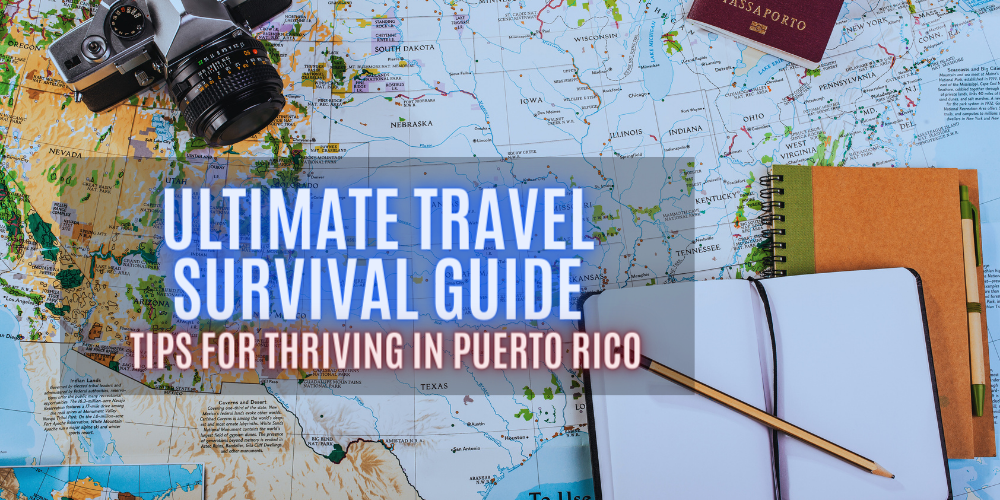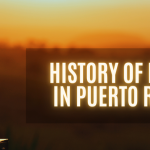Are you planning a trip to the enchanting island of Puerto Rico and want to ensure you’re fully prepared for an unforgettable experience? Look no further! This detailed survival guide is packed with essential tips and practical information to help you navigate the island confidently. From understanding local customs to mastering logistical essentials, this toolkit guarantees a smooth and enriching journey through this vibrant Caribbean paradise.
Getting to Know Puerto Rico
Geography and Climate: Puerto Rico offers a diverse landscape, from sandy beaches and coral reefs to lush rainforests and rugged mountains. The climate is tropical with warm temperatures year-round, though travelers should be mindful of the rainy season from April to November, which may include occasional hurricanes.
Language Tips: Spanish is the primary language, but English is widely spoken in tourist areas. Brushing up on basic Spanish phrases can enhance your interactions with locals and demonstrate respect for the culture.
Currency and Transactions: The U.S. dollar is the official currency. While credit cards are accepted in urban and tourist areas, carrying cash is essential for transactions with smaller vendors and in more remote areas.

Before You Go: Travel Preparation
Essential Documents: U.S. travelers won’t need a passport but should carry some form of government-issued ID. International visitors should ensure their passports are up to date. Travel insurance covering health, accidents, and trip cancellations is highly recommended.
Packing Smart: Adapt your packing list to the climate and planned activities. Essentials include swimwear, durable hiking shoes for trails like those in El Yunque National Forest, lightweight rain gear, and ample sunscreen. Also, a good insect repellent is crucial to ward off mosquitoes, especially during the wetter months.
Health Precautions: No specific vaccinations are required for Puerto Rico, but vaccines such as hepatitis A and typhoid are recommended for all travelers. Always be prepared for sun exposure and stay hydrated to avoid heat exhaustion.
Transportation Tips
Modes of Transport: Public transportation options like buses and the Tren Urbano are limited to San Juan. Renting a car offers the most flexibility for exploring remote areas. Be mindful of heavy traffic, especially during rush hours, and the challenges of narrow, winding rural roads.
Driving Essentials: Traffic drives on the right-hand side. Road signs are in Spanish and use kilometers. Familiarize yourself with the location of toll roads, which are prevalent. Always carry a map or GPS device, as cell service can be unreliable in remote areas.
Exploring Beyond the Main Island: Day trips to smaller islands like Vieques and Culebra are worthwhile. Ferries can be booked in advance, a recommendation during weekends and holidays when services are in high demand.
Safety and Emergency Information
Emergency Protocols: Keep local emergency numbers accessible, including those for the nearest hospital or clinic. Understand the local emergency response plans, especially if visiting during hurricane season.
Staying Safe: Puerto Rico is generally safe for tourists, but standard precautions should be observed. Avoid isolated areas at night, secure valuables, and stay informed about the safety of various locales.
Food and Water Safety
Savoring Local Dishes: Puerto Rican cuisine is a delicious blend of Spanish, African, and Taíno influences. Iconic dishes include lechón (roast pork), plantains, and fresh seafood. Opt for popular local eateries — these are likely to serve the freshest, safest food.
Water Tips: Tap water in Puerto Rico is typically safe to drink. However, those with sensitive stomachs might prefer bottled water, particularly when venturing outside major cities.
Understanding Local Laws and Customs
Respecting Norms: The warmth of Puerto Rican hospitality is legendary. Show respect by dressing modestly away from the beach and seeking permission before photographing people.
Staying Connected
Communication Tools: For extended stays, a prepaid local SIM card can offer better coverage and rates. Wi-Fi is widely available in hotels and public areas, but having offline maps and essential information saved is prudent.
With this guide in hand, you’re well-prepared to explore all that Puerto Rico has to offer safely and enjoyably. From its stunning natural beauty to its dynamic cultural tapestry, your Puerto Rican adventure promises to be a journey of a lifetime.
Have you visited Puerto Rico and have personal tips or experiences to share? Contribute your insights in the comments below to help fellow travelers make the most of their visit. Let’s ensure everyone’s trip is as memorable as possible. Happy travels!







